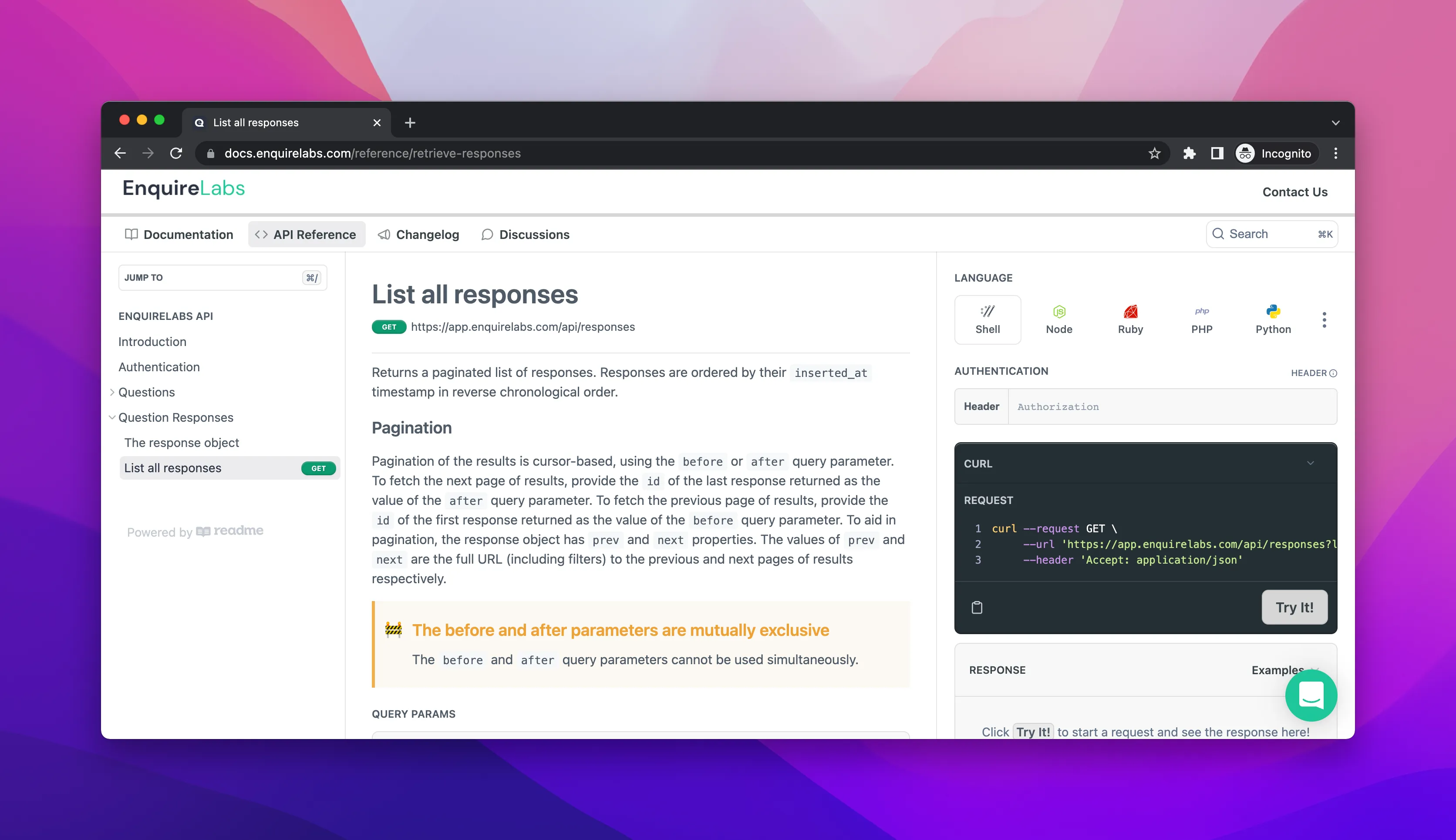
With integrations and destinations at the forefront of Fairing’s value proposition, we’ve now rolled out our API to enable programmatic access to your question & response data. Many of our clients and partners have had fantastic ideas for use cases with Question Stream™️ data, and we’re excited to see how the API helps those ideas take shape.
A quick reminder before we dive into the utility: this REST API uses private keys for authentication — you can find yours under Account > API Credentials. As is the case with all private keys, it’s crucial to store these internally and not publish or otherwise display them externally (GitHub repos, client-side code, etc). If you’re a developer, you can head over to our API documentation; otherwise, keep reading to learn what you can do.

Questions
The Question Object represents a question in your Question Stream. For the full list of object properties, see our documentation — but there are a few interesting use cases to get started:
Integration Partners looking to augment or accelerate their capabilities with Fairing’s zero-party data can GET any client’s array of questions from their Question Stream, and deliver the response data in a native experience. Or, use the prompt (string) to serve up one particular question as part of your UI.
Whether it’s attribution platforms like Triple Whale or segmentation platforms like Klaviyo, clients will get immense value out of the ability to touch and manipulate customer cohorts based on which questions they’ve answered and what responses were given.
Responses
Many of our larger brands have an existing BI tool or stack, and one of the obvious benefits of the API is the ability to GET all your response data, and feed it through your data warehouse for BI analysis. For popular ETL services like FiveTran, Stitch, and others, we’ll have specific documentation in the coming months.
For more targeted value, the Response Object can deliver both a customer’s response data, as well as any appended data we have collected (e.g. marketing UTMs, transaction data, etc). Here again, there are many properties to work with as seen in our documentation, but a few popular examples are below:
Some of the DTC brands who were first to TikTok (as in, before TikTok had any kind of ad manager) found out about it by exporting and trending their Other responses to “How did you hear about us?” With Other_response (string), those responses can now post to your destination of choice as a true always-on data stream. Ask any of our power users, and they will tell you the insights gleaned from Other responses are gold for guidance — a light shed on the Unknown-Unknowns of your product:market fit.
The Clarification Question Object can turn “nearly actionable” zero-party data into decisive insights, adding a layer that would be impossible to produce with anything other than direct-from-consumer (DFC) data. For example, in reporting on customers who chose “Podcast” in their attribution PPS, the responses (array) here can deliver all the clarification responses as to which podcasts drove that attribution. On the client’s side, this is a 5-second glance that informs where their next media dollars could go to capture more market share.
Cross-referencing revenues with responses has been the secret sauce we’ve seen for many clients, and you can do that by fetching properties like order_total (number) to quantify your question responses. You might find that your all-encompassing AOV number is actually several very different numbers based on the type of consumer, or that the shoppers who say your biggest value proposition is “high-quality materials” are indeed your highest-grossing segment. If the name of the DTC game is personalization, then zero-party data is critical… but putting dollars to that data is just as important.
Interactive Documentation
If you'd like to explore the response and question object, head over to our documentation and add your API Key into the Header field under Authentication. You can view the response to each endpoint directly in the documentation.

Errors & Troubleshooting
If you don’t see the API Credentials section in your Account tab, just contact us via chat (bottom right of this page) and we can enable it.
Typical failures by design include making calls via HTTP instead of HTTPS, or making requests without authentication.
Get In Touch
Suffice it to say, we’re eager to see what kind of speed & scale you can get from our API. Whether it’s helping current clients brainstorm on utilization and optimization, or connecting with new partners to bring added value & functionality to their services, our Product team wants to ride shotgun with you on this — so get in touch!





